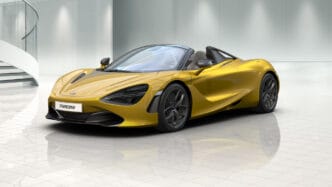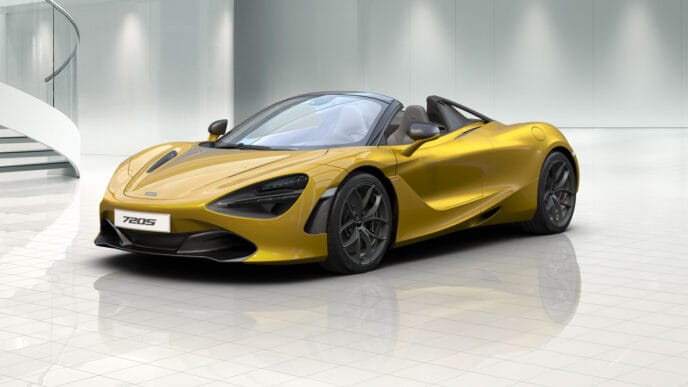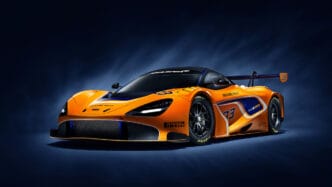The 1969 Dodge Charger is an undisputed icon of the American muscle car era, representing a perfect fusion of power, style, and innovation. Known for its aggressive design, roaring engine options, and advanced features for its time, the Charger has left an indelible mark on both automotive culture and motorsports. Whether on the streets, racetracks, or movie screens, the 1969 Charger continues to capture the imagination of car enthusiasts and collectors alike.
Engine Specifications: Power Under the Hood
The 1969 Dodge Charger came with a range of powerful engine options, catering to a variety of driving styles and performance needs:
- 225 Slant-Six Engine (3.7 L):
The base engine, producing 145 horsepower and 215 lb-ft of torque, provided a reliable option for daily drivers. It was more about durability and fuel economy than raw power. - 318 V8 Engine (5.2 L):
This 230-horsepower V8 offered more power while still being easy to handle, producing 340 lb-ft of torque. It struck a balance between performance and drivability, making it a popular option for those wanting a taste of muscle without going overboard. - 383 V8 Engine (6.3 L):
A step up in performance, the 383 Magnum delivered 335 horsepower and 425 lb-ft of torque. Paired with a four-barrel carburetor, this engine made the Charger a legitimate street powerhouse. The 383 Magnum was a popular choice for those seeking serious performance without the cost of a HEMI. - 426 HEMI V8 Engine (7.0 L):
Known as the “Elephant Motor” for its massive size, the 426 HEMI was the crown jewel of Dodge’s engine offerings. Producing 425 horsepower and 490 lb-ft of torque, the HEMI was designed for high-speed performance, featuring dual four-barrel carburetors and hemispherical combustion chambers for maximum power output. - 440 Magnum V8 Engine (7.2 L):
This big-block engine was a close contender to the HEMI, producing 375 horsepower and 480 lb-ft of torque. The 440 Magnum, revered for its brutal power and acceleration, was ideal for enthusiasts who wanted track-level performance without upgrading to the HEMI.
Technological Advancements and Features
The 1969 Charger was more than just a muscle car with raw horsepower—it introduced several technological advancements that set it apart:
- Aerodynamic Design:
The Charger’s sleek, fastback roofline and recessed grille helped improve aerodynamics, making it more efficient at higher speeds. The Charger Daytona, a racing-oriented variant, took this a step further with its elongated nose and towering rear wing, becoming the first NASCAR vehicle to break 200 mph. - “Coke Bottle” Styling:
The Charger featured a distinctive “Coke bottle” shape, characterized by a narrow waist and flared fenders. This design gave the car an aggressive stance and helped stabilize it at high speeds, adding to its menacing appearance. - Hidden Headlights:
The Charger’s headlights were a notable feature for the 1969 model. When turned off, the headlights were hidden behind a grille, giving the front end a smooth, streamlined look. This not only enhanced the car’s aerodynamic properties but also contributed to its sleek, intimidating appearance.
- Suspension and Handling:
The Charger came with a torsion-bar front suspension and a leaf-spring rear setup, providing a solid platform for both straight-line performance and cornering. While muscle cars were not particularly known for their handling, the Charger’s suspension struck a reasonable balance between performance and comfort, offering a surprisingly smooth ride for a vehicle of its size and power. - Interior and Comfort Features:
Despite its focus on performance, the 1969 Charger also catered to drivers seeking comfort and convenience. The interior featured a driver-focused dashboard with easy-to-read gauges, bucket seats, and optional extras like air conditioning and power windows, making it a well-rounded package that was as comfortable as it was fast.
Impact on Automotive Culture
- Muscle Car Legacy:
The 1969 Charger was a defining vehicle in the muscle car era, helping to popularize the concept of affordable, high-performance cars for the masses. It showcased how American automakers could produce vehicles that balanced everyday drivability with immense power, helping to cement the Charger as a staple in the muscle car scene. - Pop Culture Icon:
The Charger gained even more fame through its appearances in movies and television, most notably in Bullitt (1968) and The Dukes of Hazzard. Its role as the black villainous car in Bullitt‘s iconic chase scene against Steve McQueen’s Ford Mustang has been etched into cinema history. Likewise, the “General Lee” in The Dukes of Hazzard turned the Charger into a household name, recognizable for its bold orange paint job and daredevil stunts. - NASCAR Influence:
The Charger also made a significant impact in motorsports, particularly in NASCAR. The Daytona variant, with its advanced aerodynamic features, was a game-changer in stock car racing, pushing manufacturers to innovate and rethink their designs to compete. It marked the beginning of the “aero wars” between automakers and raised the bar for performance in motorsports. - Collector’s Dream:
Today, the 1969 Charger is one of the most collectible muscle cars on the market. Models equipped with the 426 HEMI engine or in pristine condition fetch high prices at auctions, often commanding six-figure sums. Its value and desirability have only increased over time, solidifying its status as a classic.
Rivals of the 1969 Dodge Charger
The 1969 Charger faced tough competition from several other high-performance muscle cars, each vying for supremacy during the “muscle car wars” of the late 1960s. Here’s a look at some of its fiercest rivals and their specifications:
- 1969 Chevrolet Camaro SS:
- Engine Options:
- 350 V8 (5.7 L) producing 300 horsepower.
- 396 V8 (6.5 L) producing up to 375 horsepower.
- Performance:
Known for its balance of power and agility, the Camaro SS was a formidable opponent to the Charger. The Camaro had excellent acceleration and was particularly competitive on the racetrack. - Cultural Impact:
The Camaro SS became a symbol of Chevrolet’s muscle car dominance and a direct competitor to the Ford Mustang, with a strong presence in racing and pop culture.
- Engine Options:
- 1969 Ford Mustang Boss 429:
- Engine:
- 429 V8 (7.0 L) producing 375 horsepower and 450 lb-ft of torque.
- Performance:
The Boss 429 was one of the most powerful Mustangs ever built, designed to dominate NASCAR. It featured a massive engine that delivered extraordinary straight-line speed, though it was more difficult to handle compared to other Mustangs. - Cultural Impact:
The Mustang had already established itself as a leader in the muscle car scene, and the Boss 429 version further solidified Ford’s place in the performance car market. It remains one of the most collectible Mustangs today.
- Engine:
- 1969 Pontiac GTO “The Judge”:
- Engine:
- 400 V8 (6.6 L) producing 366 horsepower, with the Ram Air IV package pushing it to 370 horsepower.
- Performance:
The GTO was a pioneer in the muscle car movement, often credited with sparking the era. “The Judge” edition offered aggressive styling and improved performance, making it a street and track competitor to the Charger. - Cultural Impact:
The GTO was seen as the definitive muscle car of the era, and “The Judge” added an extra layer of street cred. It remains a favorite among muscle car enthusiasts.
- Engine:
- 1969 Plymouth Road Runner:
- Engine Options:
- 383 V8 (6.3 L) producing 335 horsepower.
- 440 V8 (7.2 L) producing 375 horsepower.
- 426 HEMI V8 (7.0 L) producing 425 horsepower.
- Performance:
The Road Runner shared many components with the Charger but was a simpler, more budget-friendly option. Its focus on raw power without unnecessary luxury made it a popular choice for muscle car purists. - Cultural Impact:
Known for its affordability and no-nonsense approach to performance, the Road Runner became a symbol of muscle car purity, especially for those who wanted maximum power at a lower price.
- Engine Options:
- 1969 Chevrolet Chevelle SS:
- Engine:
- 396 V8 (6.5 L) producing 375 horsepower.
- 454 V8 (7.4 L) introduced in 1970, producing 450 horsepower.
- Performance:
The Chevelle SS was known for its power and straight-line speed, with the 396 engine offering excellent performance. In 1970, the introduction of the 454 V8 pushed it to new heights. - Cultural Impact:
The Chevelle SS became one of Chevrolet’s most popular muscle cars, combining big-block performance with a stylish, full-sized body. Its legacy as a muscle car icon has only grown over the years.
- Engine:
Conclusion: The Charger’s Legacy in the Muscle Car Wars
The 1969 Dodge Charger stood tall among its rivals in the muscle car wars, with its powerful engine lineup, innovative features, and unmistakable styling. It not only helped define the muscle car era but also left a lasting impact on automotive culture through its influence in motorsports, pop culture, and its collector’s value. Alongside its fierce competitors, including the Camaro SS, Mustang Boss 429, and GTO, the Charger cemented itself as one of the most iconic and revered muscle cars in history.
The legacy of the 1969 Charger is a testament to a time when American automakers were locked in fierce competition, pushing the boundaries of performance and design. Today, the Charger remains a symbol of American muscle, celebrated for its timeless design, brute force, and technological innovations that still inspire car enthusiasts worldwide.
















Hey! Would you mind if I share your blog with my zynga group?
There’s a lot of folks that I think would really enjoy your content.
Please let me know. Cheers https://menbehealth.wordpress.com/